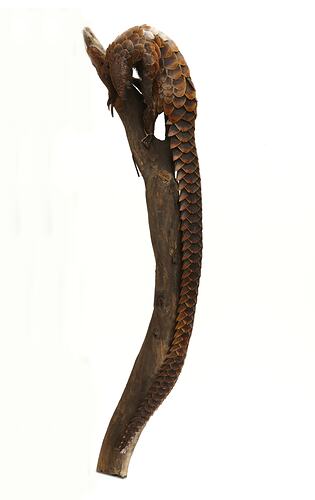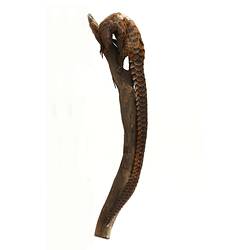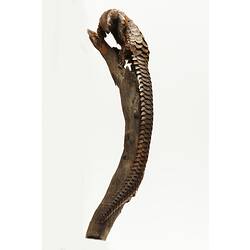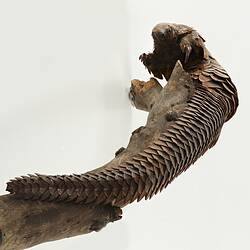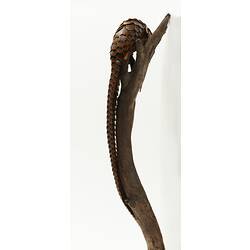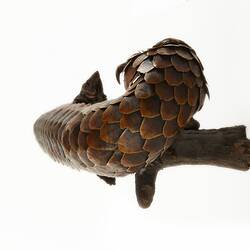Summary
The Long-tailed Pangolin is the smallest of eight species of pangolin, the only group of mammals to be covered by keratin scales. Pangolins occur in Africa and Asia. This species lives in tropical riverine and swamp forests of West and Central Africa. Exactly where this specimen was collected is unknown.
The name "pangolin" comes from the Malay for "one that rolls up" as they tuck their head under their tail when threatened. The Long-tailed Pangolin's English common name comes from its prehensile tail, which is twice as long as its body.
Pangolins are the world's most trafficked animals. All species are hunted for their meat but also for their scales for local and international traditional medicine markets. The International Union for Conservation of Nature (IUCN) classifies all pangolin species as Critically Engendered, Endangered or Vulnerable. They are also all listed on Appendix I of the Convention on International Trade in Endangered Species (CITES) to prevent international trade from threatening them with extinction. Declining populations of Asian pangolins has increased demand for African species, including the Long-tailed Pangolin which the IUCN currently considers Vulnerable.
Specimen Details
-
Taxon Name
-
Preferred Common name
Long-tailed Pangolin
-
Number Of Specimens
1
-
Sex
Unknown
-
Specimen Nature
Nature: Mount, Form: Dry
-
Collected By
Unknown
-
Category
-
Scientific Group
-
Discipline
-
Collecting Areas
-
Type of Item
Taxonomy
Geospatial Information
-
Continent
-
Precise Location
west
